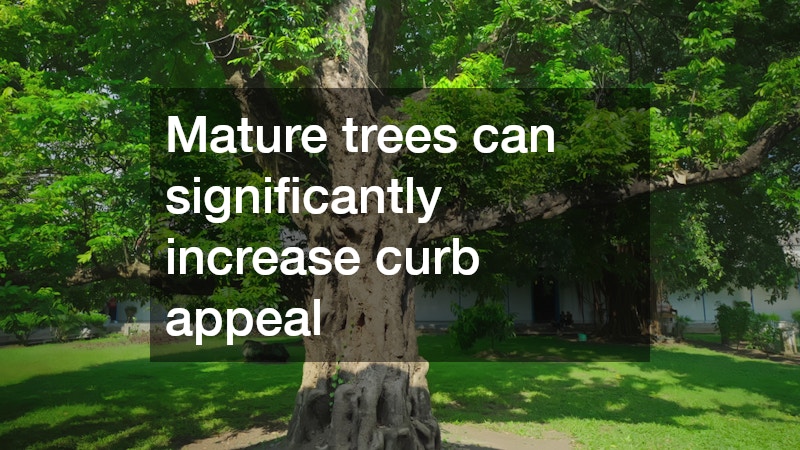Urbanization and development projects increasingly threaten mature trees, which are vital to our ecosystems. The aesthetic, ecological, and economic advantages they provide are significant, making their preservation crucial.
Rescuing at-risk trees through relocation not only helps maintain the habitat but also contributes to a greener environment. By understanding how a tree relocation service works, homeowners and developers can make informed decisions that benefit both their properties and the surrounding communities.
Investing in tree relocation is an investment in environmental sustainability. As climate change and urban sprawl continue to impact natural landscapes, the relevance of tree relocation services has emerged as a vital component of responsible land management practices.
In this article, we will explore how such services work and why they are essential in today’s world.
What is a Tree Relocation Service?
A tree relocation is a specialized service that involves safely and efficiently moving a tree from one location to another. The process is intricate, often requiring specialized tools and expertise to perform successfully. These services generally focus on preserving the tree’s health and ensuring that it can thrive in a new environment.
The methodologies involved in tree relocation can vary widely depending on several factors, including the tree’s size, species, and condition. Professionals assess the tree’s root system, the surrounding soil, and environmental conditions to select the best approach for relocation. Equipment like tree spades and cranes are often utilized in this delicate process.
Awareness of the ecological value of trees has spurred advancements in the techniques employed in tree relocation. Services now often incorporate innovative equipment and methods, ensuring minimal harm to the transported trees.
Why Should You Consider Relocating a Tree?
The benefits of relocating trees include preserving landscapes, mitigating construction impacts, and enhancing property value. Relocation services allow the preservation of mature trees that contribute to the landscape’s aesthetic appeal, while also serving vital environmental roles such as carbon sequestration and habitat provision for wildlife.
Amidst development projects, trees may stand in the way of new constructions. Instead of removing these well-established trees, opting for a tree relocation service can be a sustainable solution that allows for new developments while retaining natural elements. This conscious decision to relocate not only protects valuable greenery but also promotes harmony between construction and nature.
Enhancing property value is another compelling reason for tree relocation. Mature trees can significantly increase curb appeal and overall property value, which is a consideration for homeowners and property developers alike.
How is a Tree Relocated? What Are the Steps Involved?
The step-by-step process of a typical tree relocation service includes site assessment, preparation of the tree for relocation, transportation methods, and replanting techniques. The first step typically involves a thorough site assessment, where professionals evaluate the existing conditions to determine the best method for relocation.
Preparation for the relocation process itself is critical and includes root pruning, which promotes healthy recovery after the tree is moved. Experts often recommend a specific timing for relocation to minimize stress on the tree. Factors such as season and weather play a pivotal role in the success of the overall relocation effort.
Transportation methods vary from simple hand tools to heavy machinery, depending on the tree’s size and location. After transportation, replanting techniques must ensure that the trees are given the best chance to thrive in their new environment. Site preparation, planting depth, and post-planting care are all integral components of this process to facilitate recovery.
What Factors Affect the Success of Tree Relocation?
Several key factors influence the success rates of tree relocation, such as tree species, age, size, seasonal timing, and soil conditions. The species of the tree plays a significant role in determining how well it will adapt post-relocation, with some varieties being more resilient than others to transplant stress.
Age and size are critical factors, as older and larger trees often face more challenges during the relocation process. They require more intricate planning and care for a successful move. Understanding the implications of the tree’s characteristics can help in setting realistic expectations for the outcome of the relocation.
Seasonal timing also directly affects the success of the tree relocation process. Performing the relocation during dormancy periods is usually advantageous, as trees can withstand the shock better than when they are in active growth. Moreover, soil conditions greatly influence the health of the tree during and after the relocation, necessitating careful evaluation before proceeding.
Tree relocation services present an effective way to give trees a second chance by preserving their life and ecological benefits. With the right expertise and approach, these services can play a crucial role in environmental conservation and landscape management. The ecological advantages of maintaining mature trees are substantial, benefiting both the environment and human communities alike.
By utilizing a professional tree relocation service, property owners, developers, and communities can contribute to the sustainability of green spaces. Engaging in this practice not only enriches local ecosystems but also fosters a culture of environmental respect and mindfulness. The future of our landscapes depends on our ability to adapt and make conscious choices regarding our natural resources.
As urban development continues to encroach on natural habitats, the role of tree relocation is ever more essential. It is our responsibility to ensure that these living monuments thrive even amidst change, enhancing not just our personal spaces but also the collective vitality of our environment. Together, we can truly give trees a second chance through effective and thoughtful relocation practices.

